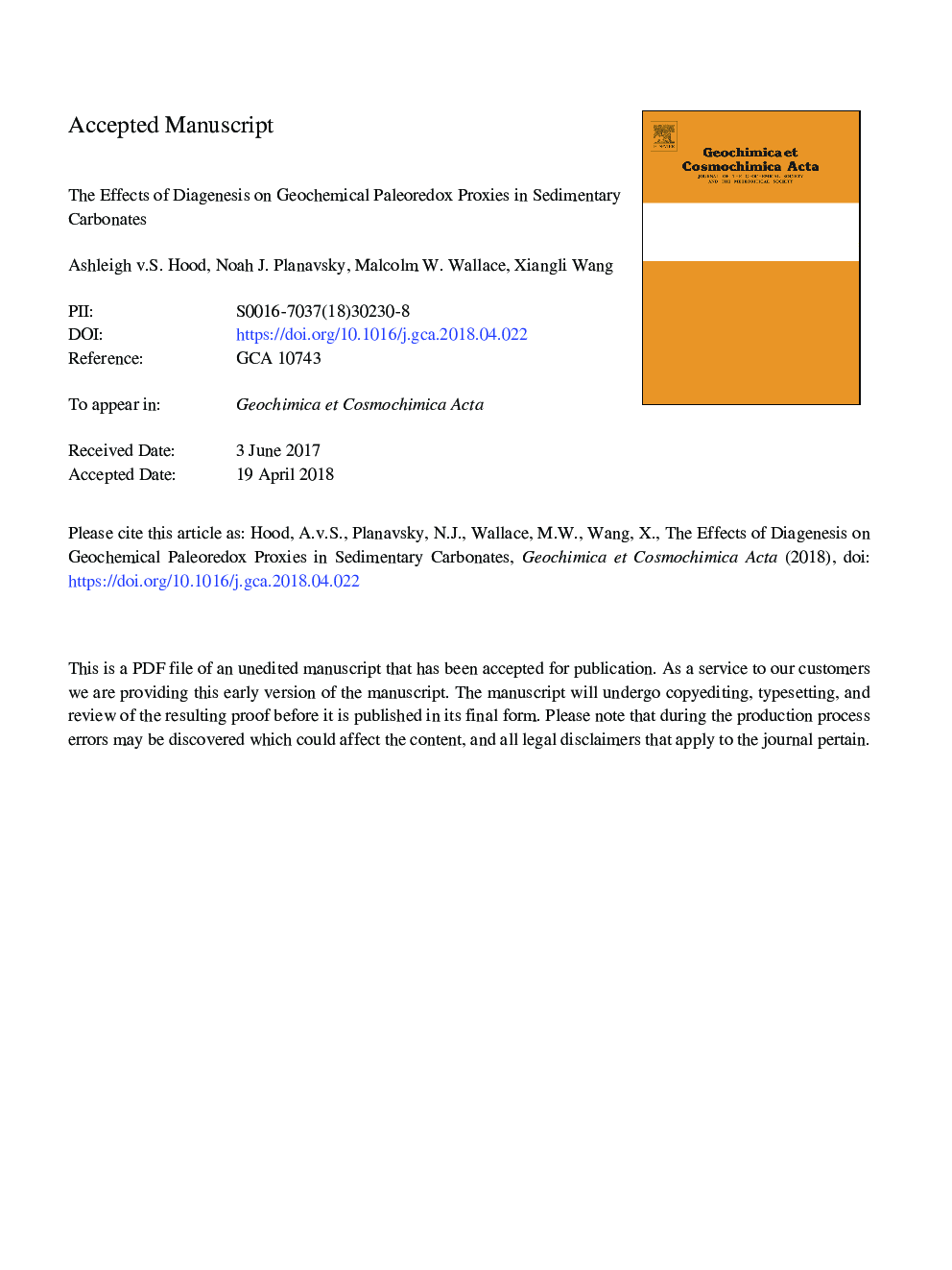| Article ID | Journal | Published Year | Pages | File Type |
|---|---|---|---|---|
| 8910737 | Geochimica et Cosmochimica Acta | 2018 | 48 Pages |
Abstract
Metal and metal isotope records in carbonates have the potential to provide novel insights into ancient ocean-atmosphere redox conditions, paleoenvironmental conditions, and biogeochemical cycling. However, trace element geochemical signatures in carbonates can record either diagenetic or depositional signatures. Here we explore the variability in uranium isotopes, trace metal and rare earth elementâ¯+â¯yttrium (REY) concentrations in carbonate successions that have undergone several common types of diagenetic alteration. Case studies include the Cryogenian Balcanoona Reef, Australia (marine dolomitization, neomorphism); the Devonian Canning Basin reefs, Australia (burial dolomitization, karstification); the Paleozoic of the Great Basin, USA (high temperature and regional burial dolomitization) and the Carboniferous Waulsortian Limestone, Ireland (Pb-Zn mineralization). In all of the examined cases there are significant heavier and/or lighter shifts in U isotope values between the most petrographically pristine marine depositional components and altered or late-stage diagenetic phases. Although we also found that REY patterns can be overprinted during diagenesis, normalized REY profiles appear to be commonly retained through diagenetic recrystallization, consistent with previous studies. The direction and magnitude of the change in metal isotope systems during diagenesis cannot be generalized between case studies, consistent with carbonate alteration being controlled by a wide range of factors including the composition and source of the alteration fluids. In this light, we build on framework developed from traditional isotope systems and support the view that future work on metal and metal isotope compositions of carbonates should include integrated sedimentological and petrographic analysis. Petrographic work not only represents a screening procedure for sedimentary geochemical work, but can also significantly enhance the paleo-environmental interpretation of metal isotope data.
Related Topics
Physical Sciences and Engineering
Earth and Planetary Sciences
Geochemistry and Petrology
Authors
Ashleigh v.S. Hood, Noah J. Planavsky, Malcolm W. Wallace, Xiangli Wang,
